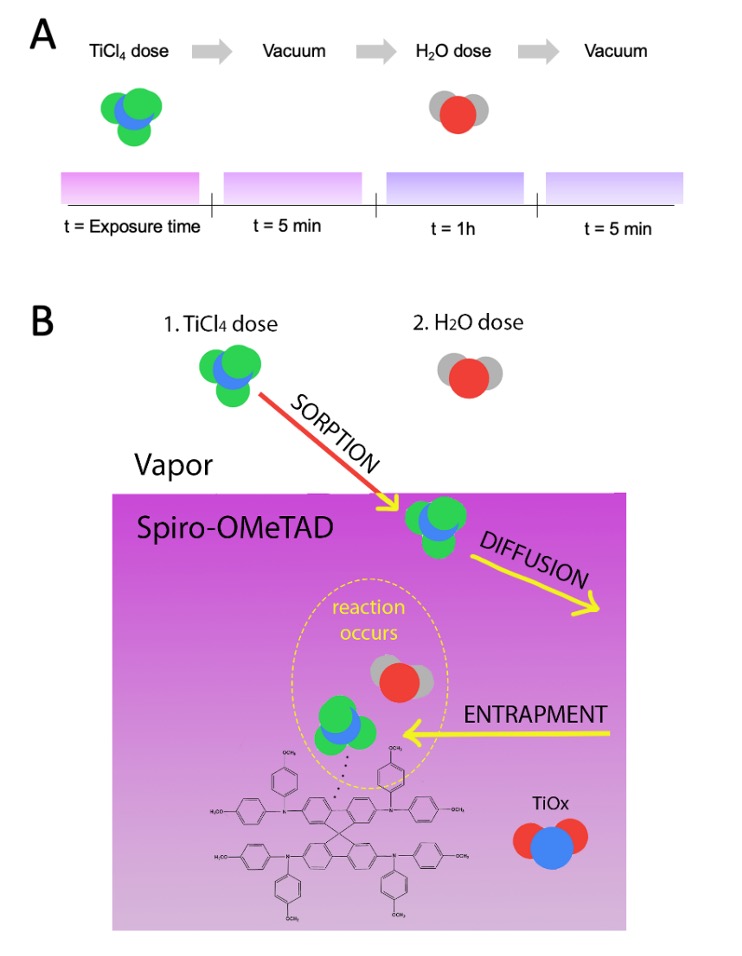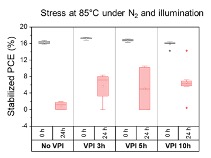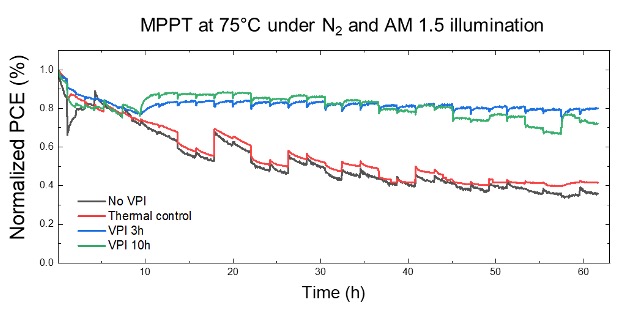To answer the market demand for alternative energy solutions, innovators have worked swiftly to develop perovskite solar cells (PSCs) for commercialization. Yet, one significant barrier remains: stability. The PSCs’ instability, which critically diminishes its product lifetime, can be caused by breakdowns within its organic charge transport layers. The crystallization of the layers’ performance-enhancing oxidized hole-transporting materials, such as spiro-OMeTAD molecules, in the hole transport layer (HTL) is one of the ways the product undermines itself while operational. Although the perovskite layer can endure temperatures as high as 120 °C, the spiro-OMeTAD layer may start crystallizing after multiple heating cycles at only 70 °C.
Transforming PSCs’ film into hybrid organic-inorganic material results in improved stability and efficiency
Vapor Phase Infiltration (VPI) can yield superior thermal stability in PSCs by reducing the cracks and delamination of HTL caused by crystallization at low temperatures. This method effectively infiltrates spiro-OMeTAD with titanium oxide/hydroxide (TiOx) clusters and transforms the layers into a hybrid organic-inorganic material. The converted material limits the crystallization of spiro-OMeTAD that occurs while PSCs are operational. As a result, the main cause of degradation in PSCs is removed.
VPI-manufactured PSCs have demonstrated double the power conversion efficiency of basic PSCs upon testing over several hours at 75 °C. With advanced PSCs able to take on greater operational stress with less degradation, the overall product lifespan is increased for a relatively low cost and primes this product for commercialization success.
- Stability: Decreasing spiro-OMeTAD crystallization improves the thermal stability of hole transport layers within PSCs
- Longevity: Eliminating the main cause of PSCs’ operational degradation increases the overall product lifespan at high temperatures
- Efficiency: Preventing the delamination of the layers transporting electronic charge has doubled the power conversion efficiency of modified PSCs
- Solar power energy production, in particular perovskite solar cells
- Light emitting devices

Figure 1(A) and (B) - Vapor Phase Infiltration of Spiro-OMeTAD

Figure 2 – Improvement of thermal stability of perovskite solar cells after vapor phase infiltration

Figure 3 - Observed enhancement of efficiency of perovskite solar cells after vapor phase infiltration
